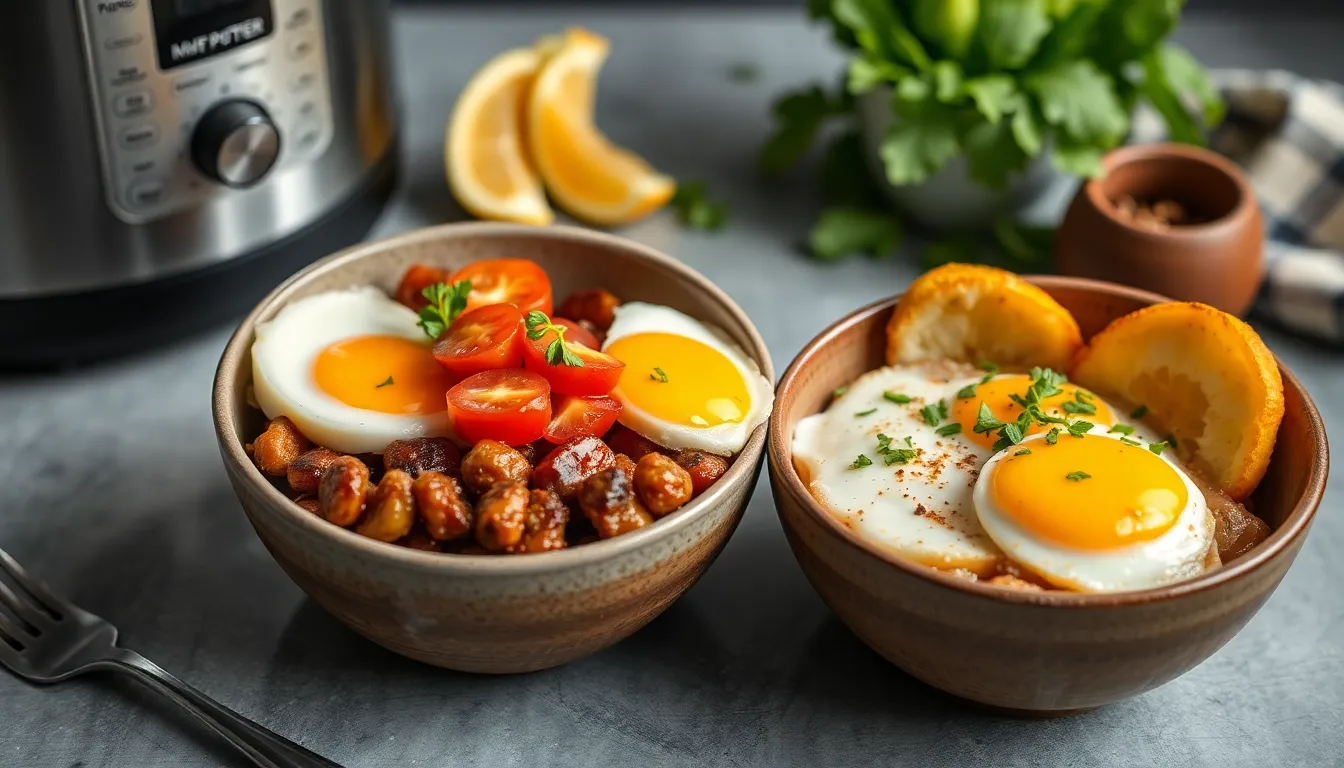How to Poach Eggs in a Nonstick Skillet: A Foolproof Method
Introduction
Poaching eggs is a cooking technique that has gained immense popularity among home cooks and professional chefs alike. It’s a method that elevates the simple egg to a new level, allowing for a tender, runny yolk that adds richness to any dish. The beauty of poached eggs lies not only in their delicious flavor but also in their nutritional benefits. This article will guide you through a foolproof method of poaching eggs using a nonstick skillet, ensuring perfect results every time.
Using a nonstick skillet is crucial for achieving the ideal poached egg. The nonstick surface prevents the eggs from sticking, allowing for a smooth cooking process and easy cleanup. In this blog post, we will discuss why poaching eggs is beneficial, the tools and ingredients you’ll need, the step-by-step process for poaching eggs, troubleshooting common issues, and some delicious serving suggestions to inspire your meals.
Section 1: Why Poach Eggs?
1.1 Nutritional Benefits
One of the primary reasons people gravitate towards poached eggs is their low-calorie cooking method. Unlike frying or scrambling, poaching requires no added fat, making it a healthier option. Here are some of the nutritional benefits of poaching eggs:
- Low in calories: Poached eggs are a perfect addition to a low-calorie diet.
- Retain nutrients: Poaching preserves the essential nutrients found in eggs better than other cooking methods.
- High in protein: Eggs are a great source of high-quality protein, essential for muscle repair and growth.
1.2 Versatility
Poached eggs are incredibly versatile and can be used in a myriad of dishes. Here are a few examples:
- Salads: Toss them atop a fresh green salad for added protein.
- Breakfast Plates: Serve on toast, alongside bacon, or with sautéed vegetables.
- Meal Prep: Prepare a batch of poached eggs to enhance your week’s worth of meals.
Section 2: Tools and Ingredients Needed
2.1 Essential Tools
- Nonstick Skillet
- Slotted Spoon
- Measuring Cup
- Fresh Eggs
- Optional: Vinegar, salt, and pepper
2.2 Ingredients
- Fresh eggs (quantity according to need)
- Optional seasonings to enhance flavor (such as herbs, spices, etc.)
HTML Table: Tools and Ingredients Overview
| Tools | Ingredients |
|---|---|
| Nonstick Skillet | Fresh Eggs |
| Slotted Spoon | Vinegar (optional) |
| Measuring Cup | Salt and Pepper (to taste) |
Section 3: The Foolproof Method for Poaching Eggs
3.1 Preparing the Skillet
To achieve the best poached eggs, start by preparing your nonstick skillet:
- Place the skillet on the stove over medium heat.
- Add enough water to cover the bottom of the skillet by about an inch.
- If using, add a splash of vinegar—this helps the egg whites set more quickly.
3.2 Cracking the Eggs
Cracking eggs for poaching can be tricky if not done correctly. Follow these tips:
- Use fresh eggs, as they hold their shape better.
- Crack the egg into a measuring cup or small bowl to avoid shell fragments.
- Gently slide the egg from the cup into the simmering water.
3.3 The Poaching Process
Now it’s time for the main event—the poaching process! Follow these steps:
- Once the water is simmering (small bubbles rising), gently add the eggs one at a time to the skillet.
- Cook the eggs for about 3-4 minutes for a runny yolk or longer if you prefer firmer yolks.
- Using the slotted spoon, carefully lift the eggs out of the water once done, letting any excess water drip off.
- Season with salt and pepper to taste.
Section 4: Troubleshooting Common Poaching Issues
4.1 Eggs Spreading Too Much
When poaching, if you notice that your eggs are spreading too much:
- Try creating a gentle whirlpool in the water before adding the egg—this will help the whites wrap around the yolk.
- Use a smaller pot or skillet for fewer eggs to keep them more compact.
4.2 Overcooked Yolks
Overcooking the yolk is a common issue. Look for these signs:
- Yolk will be firm to the touch instead of slightly jigglier.
- To avoid this, keep an eye on your cooking time and use a timer!
4.3 Egg Whites Not Setting
If the egg whites aren’t setting:
- Ensure your water is at a simmer, not a rolling boil—excessive motion can break the eggs apart.
- Consider adding a tablespoon of vinegar to the water—this helps the egg whites coagulate faster.
Section 5: Serving Suggestions
5.1 Classic Dishes Featuring Poached Eggs
Poached eggs can elevate many dishes. Here are a few classic options:
- Eggs Benedict: A traditional breakfast dish featuring poached eggs served over English muffins with Canadian bacon and hollandaise sauce.
- Avocado Toast with Poached Eggs: A trendy brunch item that combines creamy avocado with perfectly poached eggs on toasted bread.
- Salad with Poached Eggs: A fresh, healthy option that adds protein to a bed of greens.
5.2 Creative Variations
Don’t be afraid to get creative! Here are some ideas to enhance your poached eggs:
- Sprinkle fresh herbs like chives, parsley, or cilantro on top for a burst of flavor.
- Explore spices like paprika or chili flakes for a kick.
- Serve with different sauces, such as a lemon-dill sauce or a spicy harissa for a unique twist.
Conclusion
Poaching eggs in a nonstick skillet is a simple yet rewarding technique that can elevate your dishes to new heights. Whether you’re looking for a healthy breakfast, a light lunch, or a fancy brunch dish, poached eggs are versatile enough to fit any occasion. By following this foolproof method and keeping in mind some troubleshooting tips, you’ll be well on your way to mastering the art of poaching eggs. So grab your skillet, and let’s get cooking—delicious poached eggs await!




